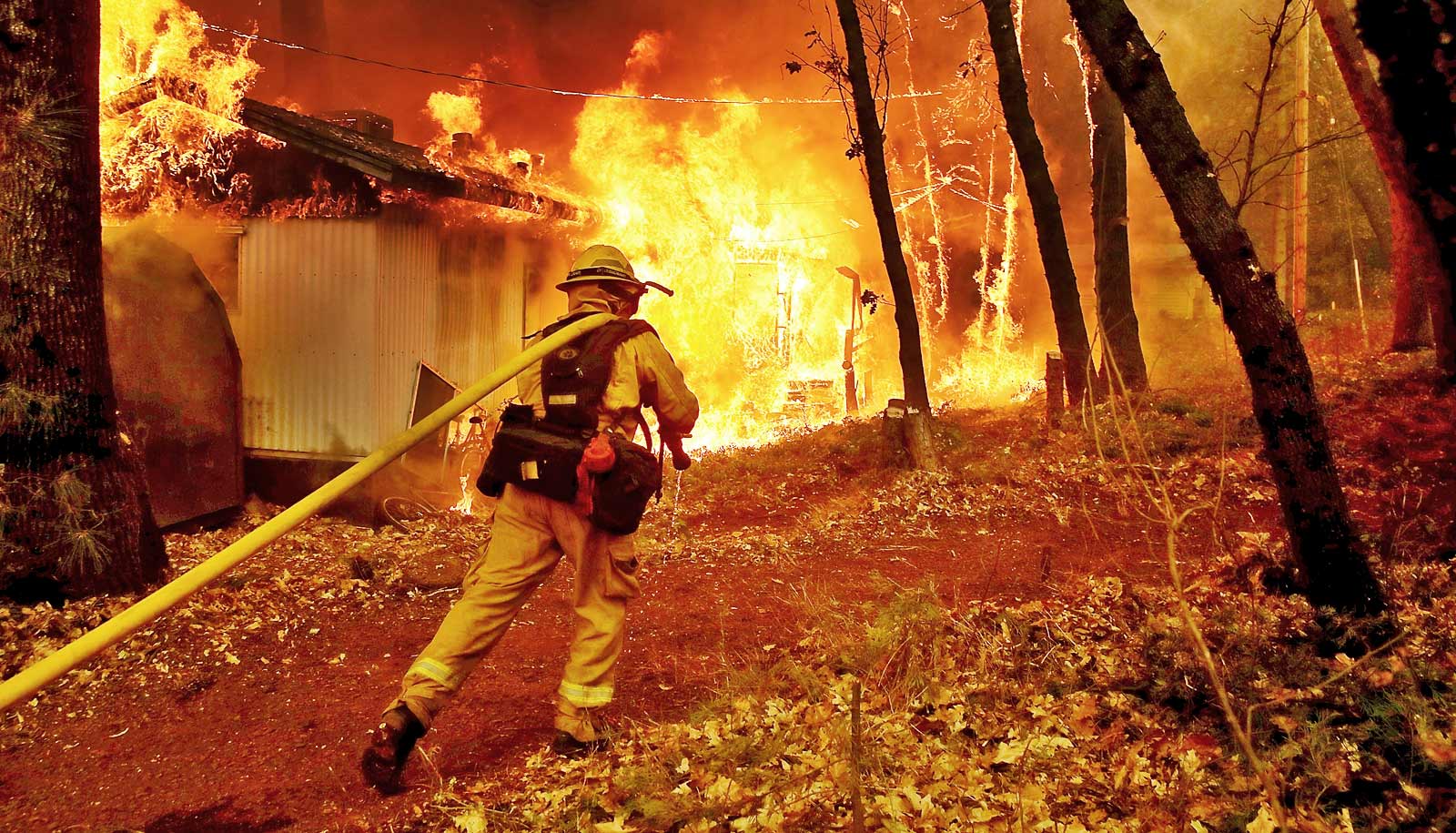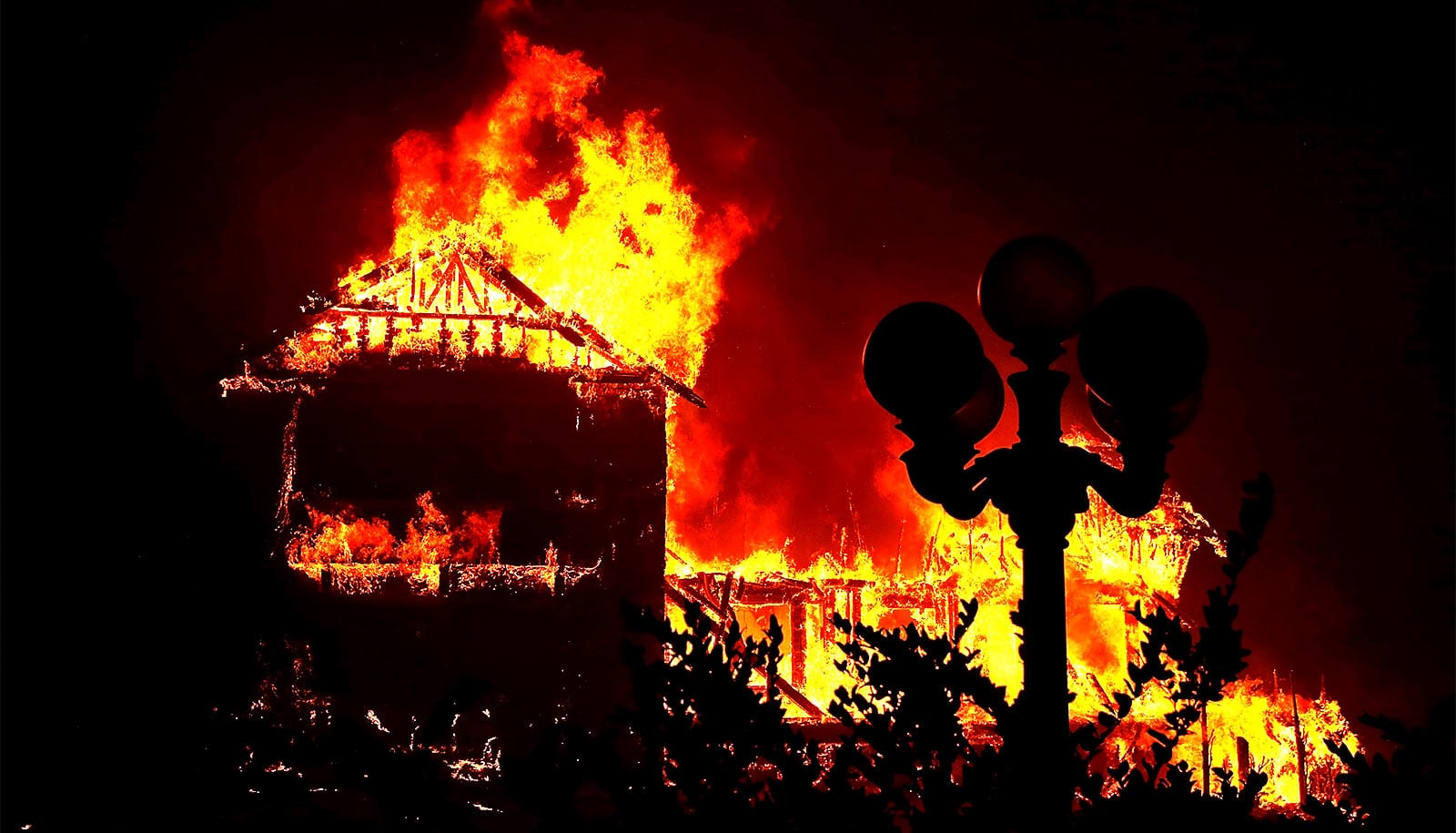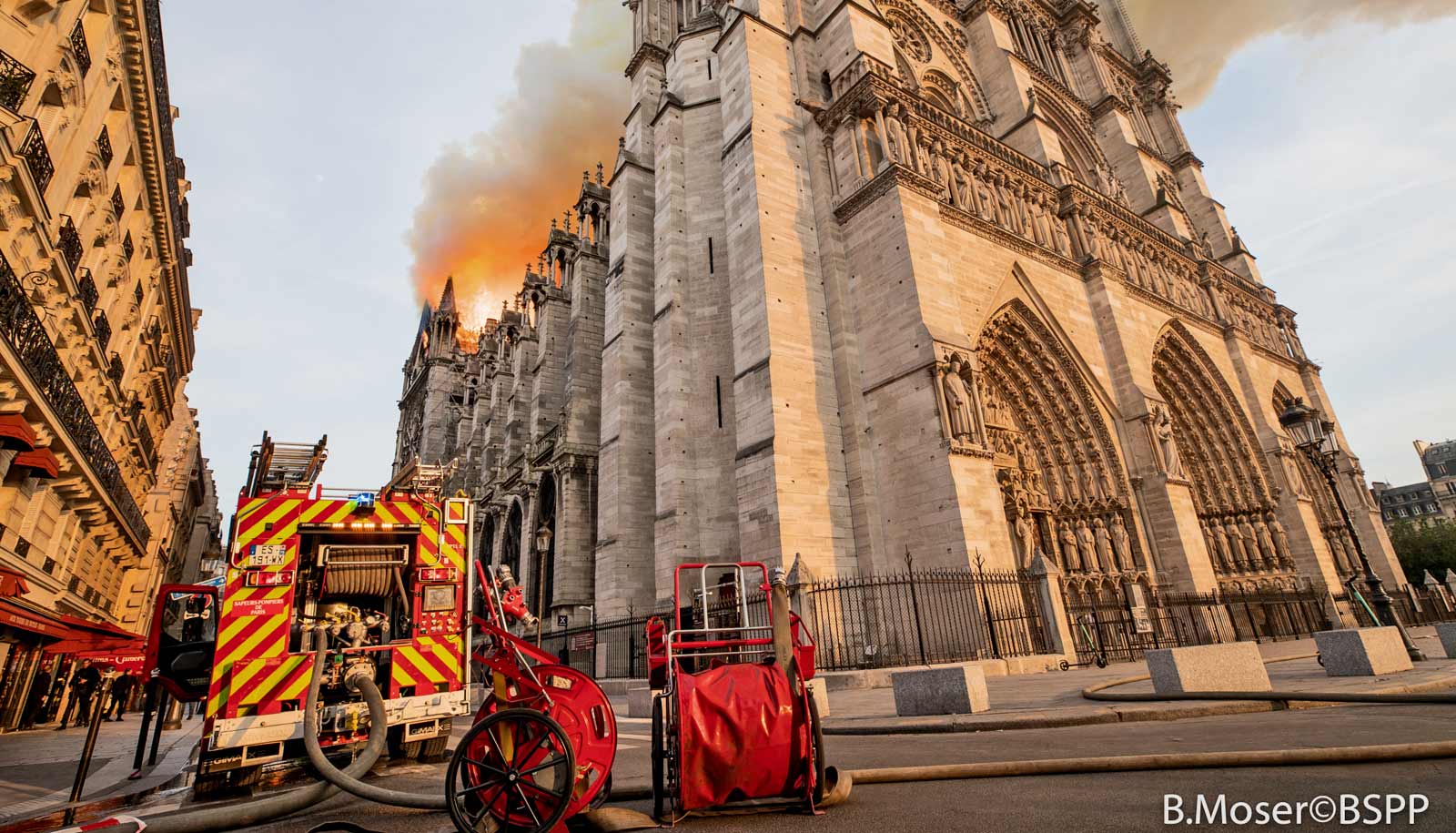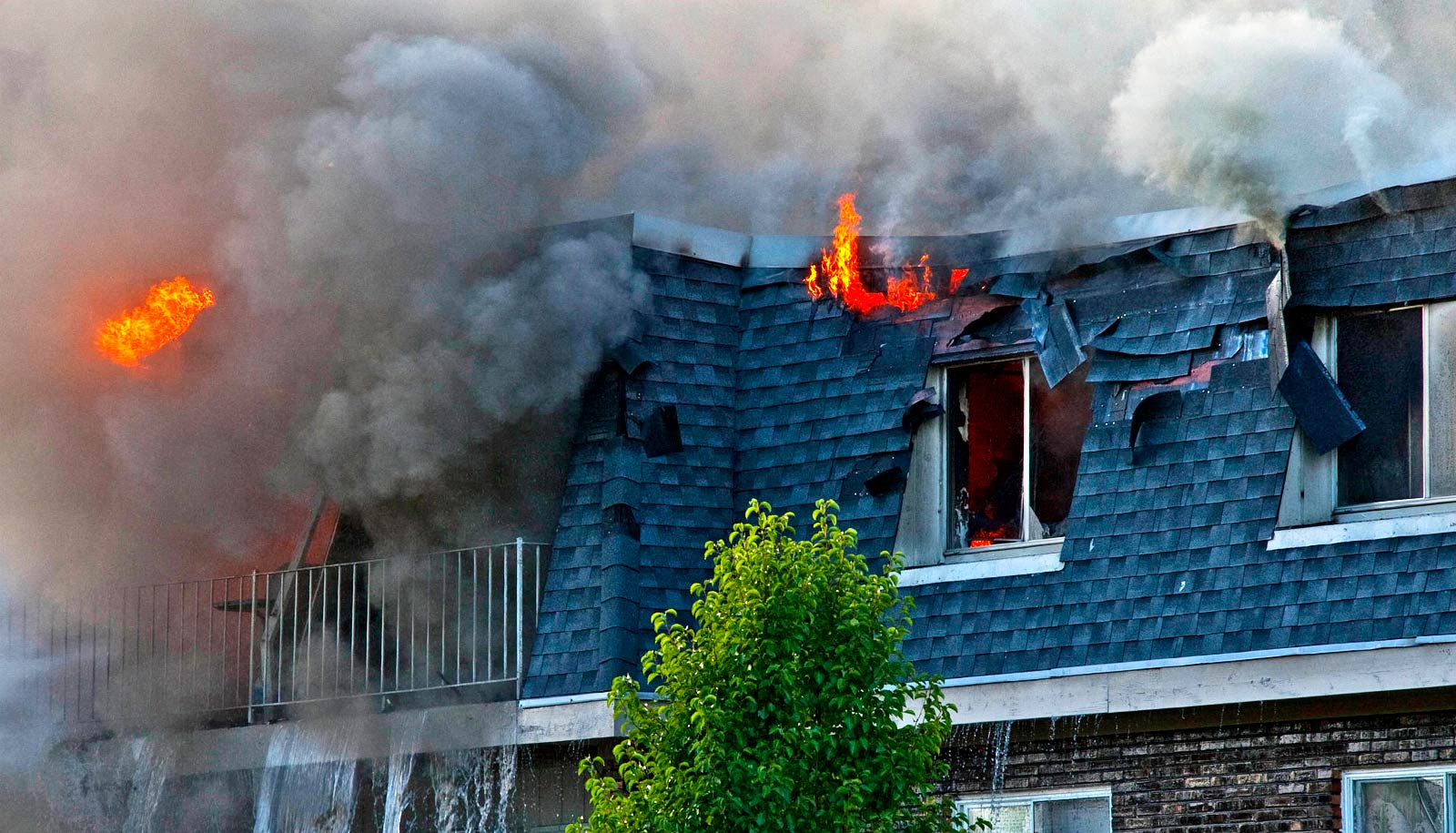Abnormal is the new normal for Western wildfires, with increasingly bigger and more destructive blazes, experts say. But understanding the risks can help avert disaster.
Throughout Western North America, millions of people live in high-risk wildfire zones thanks to increasingly dry, hot summers and abundant organic fuel in nearby wildlands. Researchers say that’s a recipe for disaster.
This year, the National Interagency Fire Center predicts a heavy wildfire season for areas along the West Coast from California into Canada due to a heavy crop of grasses and other plants that developed in the wake of a wet winter.
In California, the largest utility, Pacific Gas & Electric, has already begun fire hazard-prevention power cut-offs that will likely affect hundreds of thousands of customers in the months ahead. Meanwhile, insurance claims for wildfires that devastated parts of California this past November recently topped $12 billion—a total that represents the state’s largest-ever economic loss from fire.
Here, experts Chris Field, director of the Stanford Woods Institute for the Environment; Rebecca Miller, a PhD student in the Emmett Interdisciplinary Program in Environment and Resources; and Michael Goss, a postdoctoral research fellow in the School of Earth, Energy & Environmental Sciences, discuss what to expect from the wildfire season this year and into the future:
What trends have we seen in recent fire seasons?
Miller: We’ve seen a trend in California toward larger and more destructive wildfires. During the past two years, California experienced four of the 20 largest and eight of the 20 most destructive wildfires in its recorded history. In 2017 and 2018, nearly 3 percent of the entire state was on fire at some point, an area equivalent to about 80 percent of Connecticut.
Is there anything about the upcoming fire season that is likely to be out of the ordinary?
Field: We are in an era when every fire season is likely to be out of the ordinary. The combination of climate change, increasing development in the wildland-urban interface, and fuel accumulation from decades of fire suppression dramatically increases the risk of fires that are large and catastrophic.
Former California Governor Jerry Brown described the situation as a “new abnormal.” We need to recognize that, in California, we face the real risk that every fire season will be among the most destructive, or even the most destructive, on record. Unless we get ahead of the problem, fire risk in 2030 or 2040 could make the last few years look calm.
What factors and conditions could drive wildfire risk in the months ahead?
Goss: The National Oceanic and Atmospheric Administration’s Climate Prediction Center forecasts above-normal temperatures through August. This may reduce snowpack in the high elevations, leading to less runoff and impacting the dryness of fuels that depend on runoff.
Additionally, drier conditions may further dry out vegetation. This could prime the region for an enhanced wildfire risk, although ignition and immediate weather conditions, such as strong offshore wind events, also play a critical role.
The extreme wildfire seasons we have seen recently in California have been, in part, triggered by a combination of hot, dry summers and falls, a later than normal onset to the rainy season and offshore winds that have occurred when fuels have been at their driest.
Field: Especially in California, the greatest risk of fire is in periods of hot dry winds like the Santa Ana or Diablo winds. These hot, dry winds can quickly desiccate fine fuels to the extent that they become almost explosive, susceptible to ignition with a small spark.
In fire-prone parts of California, there are many sources of ignition, ranging from lightning to discarded cigarettes and untended campfires to sparks from equipment or power lines.
To what extent can an unusually wet winter, like the one California just experienced, influence the summer wildfire season?
Field: In general, a wet year like 2019 leads to increased fire risk in grasslands and low-elevation parts of the state where extra moisture increases the growth of grass and other fine fuels. But in the higher mountains, the unusually high snowpack will melt later than usual, decreasing the length of the time that forests are dry enough to burn.
But much of the risk that a forest fire becomes catastrophic is related to the accumulation of fuels over several years. These “ladder fuels” allow fire to move from the ground to the crown of the forest, where it can move quickly, jump barriers and kill every tree in its path.
What can communities and individuals do to mitigate the risks of wildfire?
Miller: One of the most successful means to prepare individuals for a disaster is coordination at the local level: neighbors talking to neighbors, and neighbors helping neighbors. Wildfires do not follow jurisdictional boundaries, so local governments, communities and individual homeowners need to work together to mitigate their risks.
Programs like Firewise USA help local residents organize their neighborhoods to prepare for and protect from wildfires by clearing brush, retrofitting homes with wildfire-resistant building materials, and developing emergency plans that include evacuation routes.
On an individual level, homeowners can protect their properties by establishing defensible space—clearing the area around their home of vegetation—or replacing parts of their home, like roof tiles or vents, with more wildfire-resistant options.
Field: In the long run, tackling climate change will be essential. If the world continues to warm to the levels expected with high emissions through the 21st century, it is hard to imagine successfully managing wildfire risk in California.
In parallel with tackling climate change, communities can do a great deal to decrease the ladder fuels that increase the risk of catastrophic fires. Prescribed burns can be a safe and effective way to decrease fuels, especially when the accumulations are not too large. Where fuels are so dense that prescribed burns are not feasible, forest thinning is a necessary first step.
In some cases, the material removed by thinning may be suitable as fuel for power generation or other uses. Many forested areas that have seen a decrease in timber harvesting activity in recent decades may provide economic opportunities from investments in fuel reduction.
Source: Stanford University



